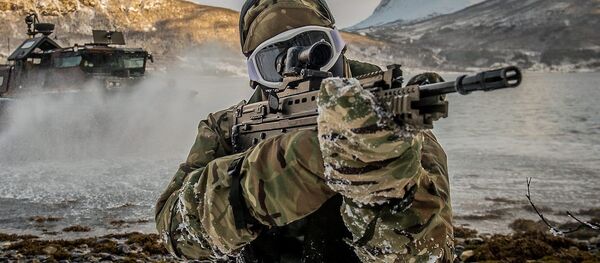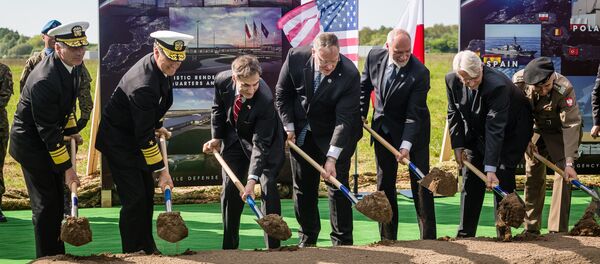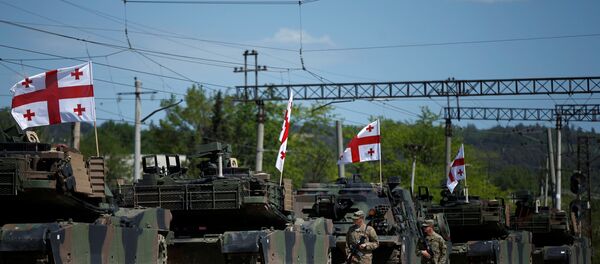In 2014 at its Wales summit, members of the North Atlantic Alliance agreed on the creation of a 'spearhead' Very High Readiness Joint Task Force, a five-battalion-strong rapid reaction unit capable of moving out in the space of a few hours to deploy in defense of an ally in the event of attack.
However, even Western military experts seem to have admitted the futility of these forces, the journalist notes, because "the units of this 'ultra-rapid response force' are by definition untenable, incapable of 'super-fast deployment', and unable to ensure anyone's security."
"This military group is the continuation of the old concept of 'defense through threat', based on the notion that a few American soldiers can, by their presence, stop the 'horde of barbarians' (at one time these were communist barbarians, now they're simply Russian ones). But NATO really does seem to believe that stretching a contingent of 5,000 troops (which would include 1,000 US troops) along a front stretching nearly 2,000 km would be an effective instrument for a rapid response."
For his part, Polish Brigadier General Krzysztof Krol seems to be more frank and honest about the troops' real purpose, "stipulating that the group will be formed primarily to fight against 'internal strife', in accordance with Article 4 of the NATO Charter; in other words, [they will be used] in cases when internal unrest degenerates into a dangerous conflict."
"Brigadier General Krol's direct superior is General Petr Pavel, a former Soviet-educated Czechoslovak special forces soldier who served as the commander of subversion forces in Czechoslovakia and then in the Czech Republic, and led a very dangerous mission in Croatia [in the 1990s], where he personally commanded an operation to rescue 50 French soldiers trapped between Serbs and Croats with no chance of survival."
"But Pavel's personal qualities, as well as those of Krzysztof Krol, do not offer any guarantees regarding the survival of the newly created military forces so actively lobbied for by Eastern European governments."
The problem, Krutikov explains, stems in part from the alliance's extreme bureaucratization, with the two operational level commands, located in Brunssum, the Netherlands, and Naples, Italy, requiring the NATO Response Force to undergo months of exercises aimed at integration and harmonization, and the conducting of numerous mini- and micro-exercises among the country's small members (and its partner states, such as Georgia).
Ultimately, the journalist suggests, the commands at Brunssum and Naples "either seriously believe that these kinds of 'five-days-a-week' training drills will increase the combat readiness of a hundred Georgian 'rangers' and fifty Estonian villagers, or they are simply fulfilling a bureaucratic action plan extremely reminiscent of the Soviet army in its late period, when it was commanded by Marshal Sergei Sokolov."
And while "the Pentagon has faced a real war of ideas between supporters of physically increasing the number of ground troops and advocates of the army's technological modernization…the main point is that at the moment, the US Army is simply not prepared to attract new forces to create a functioning, relatively speedy rapid response unit in eastern and southern Europe."
"Right now, it's necessary to get 30,000 personnel from somewhere for this operational contingent (when accounting not just for infantry, but everything, including navy and air force personnel); but they simply do not exist. The Americans aren't helping – they're trying to maintain their garrisons in Iraq. The British could, or might like to, but Germany will not allow the recreation of a British Army on the Rhine in any form. At the same time, from these 30,000 it's necessary to allocate 5,000 'untouchables' for the Very High Readiness Joint Task Force, capable of deploying within a few days."
Blowing Soap Bubbles
"Thus, after the June NATO summit in Warsaw, these five battalions should, if not contain the Russian army in a conventional conflict, at least 'send a very clear signal' about their ability to deploy in two-three days, while the flight time of an Iskander missile is 15 minutes, and that of our bombers – 20 minutes. There's nothing surprising that the US, always concerned with potential losses, want to shift the honorable task of manning these forces onto the shoulders of the Balts, the Poles and the Romanians."
At the same time, in the interests of servicing the new battalions, "NATO has contrived to set up a huge bureaucratic management structure in a short time. Specifically, the VJTF's deployment will be supported by local command and control facilities dedicated to NATO Force Integration Units (NFIU). Initially, NFIUs are being created in Bulgaria, Estonia, Latvia, Lithuania, Poland and Romania, and will work on a rotational basis and in conjunction with the host countries to identify logistical networks, transport hubs and infrastructure to enable the VJTF to deploy to areas as quickly as possible."
"Factually," Krutikov notes, "a soap bubble consisting of numerous small staffs, unable to effectively defend a territory for more than two hours, has been created to calm the restless minds of Eastern European leaders. Only two years ago, the idea was not even about providing for the rapid deployment of troops, but for the creation of [local] headquarters where English-speaking officers could quickly transmit orders to local troops. Whether these officers were Estonians or Bulgarians did not matter, but it all seemed reasonable, since it reduced the time for decision making at the local level. Now, the system has become infinitely more complex, leading only to puzzled questions."









